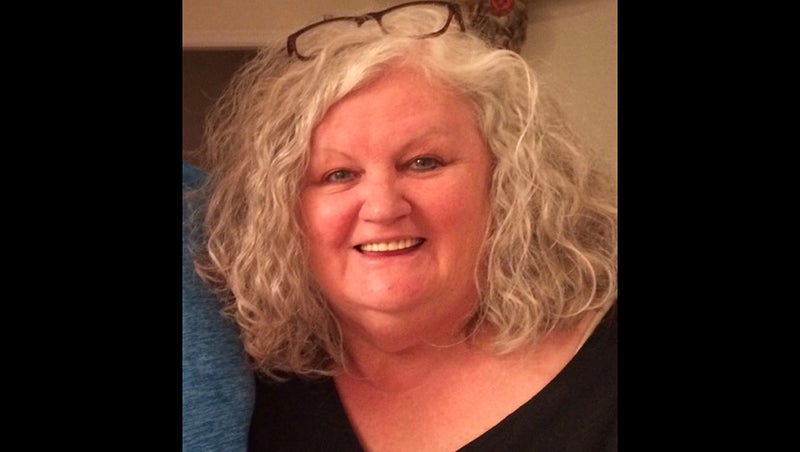The Nature Corner: Worth a thousand words
Published 10:43 am Sunday, January 16, 2022
|
Getting your Trinity Audio player ready...
|
By Ernie Marshall
I eagerly anticipate the beautiful photos by talented wildlife photographers frequently appearing in The Coastland Times. My favorites are Karen Lebing, Beverly Meekins and Bob Glennon. (I omit Jeff Lewis, only since I have not seen his work in The Times lately.) I do not wish to offer an aesthetic or naturalist’s evaluation of their work, but rather some personal responses — and that is surely what an artist, in any medium, most desires, to capture my eye, mind and heart.
Karen Lebing recently had a photo of a couple of white pelicans taken at Pea Island NWR. She points out in her photo caption that white pelicans are quite large, with a wingspan up to 20 feet. They are nearly twice the size of a brown pelican and have at a foot more of wingspan than a bald eagle. As she explains, they have a very different feeding style than brown pelicans that dive for fish as they cruise over the waves. White pelicans fish as a group, usually swimming in an ever-tighter circle to concentrate and entrap fish, rather like a fish weir.
I saw my first white pelicans in coastal North Carolina a couple of decades ago, about when they first began to show up here. I was censusing tundra swans by reading numbers on plastic neck collars with a scope with a couple of interns. I did a double take. “Get a load of this guys.” There were some white pelicans mixed in with the flock of swans, easy to miss in a hoard of big white birds.
That was exciting, but more exciting yet was my first white pelican sighting a decade prior, while visiting my brother Jim in Texas. We were sitting on his porch and a flock of huge white birds flew over. “Bet they are headed for Lake Dallas. Grab your binoculars and let’s go!”
Wouldn’t you know. Jim is a birder too and on top of that, a pilot. So we drove to the airfield where his little Cessna was waiting and off we went. We found them. A flock of perhaps a hundred white pelicans is rather conspicuous. We flew as low as we dared. A collision between a huge bird and a small plane would be a disaster.
At that time, you needed to be further west than North Carolina to encounter white pelicans. Their migration took them down the Mississippi flyway to the Gulf of Mexico. A theory has it that this species is changing its winter migration patterns because of the growth of catfish farms in our coastal region.
A captivating Beverly Meekins photo of a common grackle showed beautiful details including its iridescent colors. When living in Hyde Country near the Pamlico Sound, we had boat-tailed grackles around. I rarely saw them a few miles away at the Mattamuskeet NWR, where common grackles are usually abundant. A little bit of habitat difference can make a lot of difference. Theb-tailed grackle is larger and named for its longer keel-shaped tail. But the difference that strikes me most is that common grackles make “blackbird sounds,” and boat-tails mix in comical clucks, giggles, gurgles and squeaks.
The blackbird family (Ichteridae), which also includes the more colorful orioles, is found only in the Western Hemisphere, but the common Eurasian bird called a “blackbird” (all black except for a yellow bill) is instead a thrush and in fact of the same genus as our robin. (The kinship is disclosed by its behavior, such as searching your lawn for worms.) This is the bird referred to in nursery rhymes and the like:
“Four and twenty blackbirds baked in a pie.
And when the pie was opened the birds began to sing.
Wasn’t that a dainty dish to set before the king.”
A grackle’s odd name comes from the Latin for “jackdaw,” a Eurasian black bird that is actually in the crow family.
Bob Glennon’s recent photo is of the swamp rose. I met him years ago on a refuge getting muddy and mosquito and deer fly bit, but having fun. He was a rare find of botanical information.
I took botany as my elective as a biology major, but I think I paid more attention to the brunette next me than what the professor put on the chalkboard. With a bird you can have the excuse that it flew away. A plant will just sit there and defy you: “Name me!” I did bird walks at the Cliffs of the Neuse State Park, and the ranger asked me if I did wildflower walks. I said no because I can identify only about half the wildflowers I see. He replied: “Well, here’s what you do. Walk the trail and identify the plants you can, then on you way back pull all the others up and toss them aside.” It was a joke of course. We naturalists do have our scruples.
Bob comments on the swamp roses (Rosa palustris) common along the Scuppernong interpretative boardwalk behind the headquarters for the Pocosin Lakes NWR in Columbia (located just after crossing the bridge on I-64 west). It is a great place to visit for the boardwalk and the exhibits inside, or just chatting with the staff.
Some confuse the swamp rose for the swamp rose-mallow (Hibiscus palustris) abundant in ditch banks along US 264 and putting on quite a show of color, large rose or white with a red center blossoms, throughout the summer. This species is in the mallow rather than rose family. (But no matter. I confuse red bay, magnolia bay and loblolly bay, despite their being in different families.)
Let me end here since I am about out of my 1000 word allotment for my column; and since a picture is worth a 1000 words let these photos speak for themselves.
Erratum: My last column perhaps suggested that seasons are a phenomenon of our hemisphere, but the same seasons of course occur in the Southern Hemisphere but in reverse order, as our hemisphere leans away from the sun, we have winter and the other hemisphere has summer, and so on. So Christmas cards for your South American friends featuring snow scenes are not so timely.
Ernie Marshall taught at East Carolina College for thirty-two years and had a home in Hyde County near Swan Quarter. He has done extensive volunteer work at the Mattamuskeet, Pocosin Lakes and Swan Quarter refuges and was chief script writer for wildlife documentaries by STRS Productions on the coastal U.S. National Wildlife Refuges, mostly located on the Outer Banks. Questions or comments? Contact the author at marshalle1922@gmail.com.





